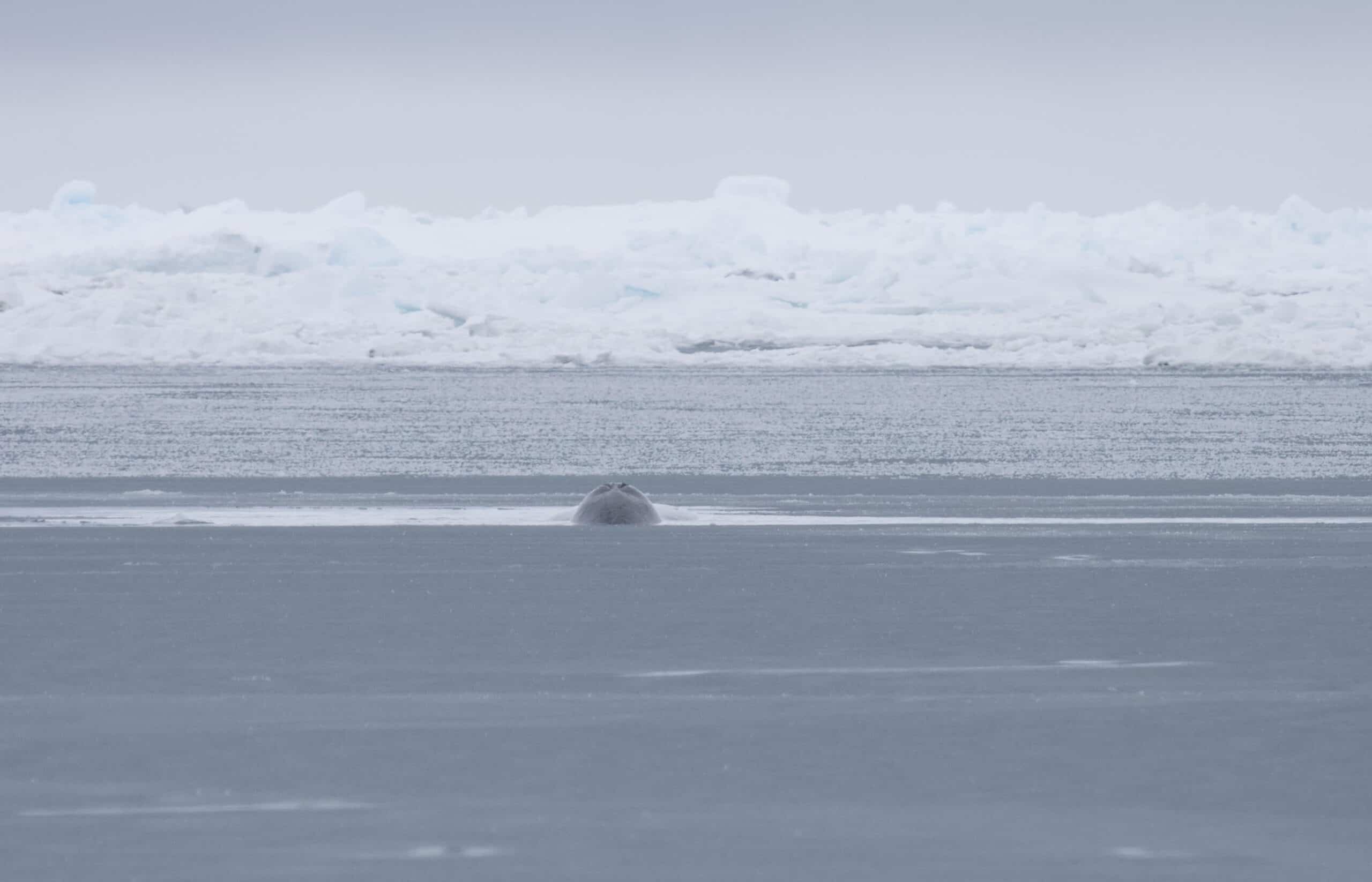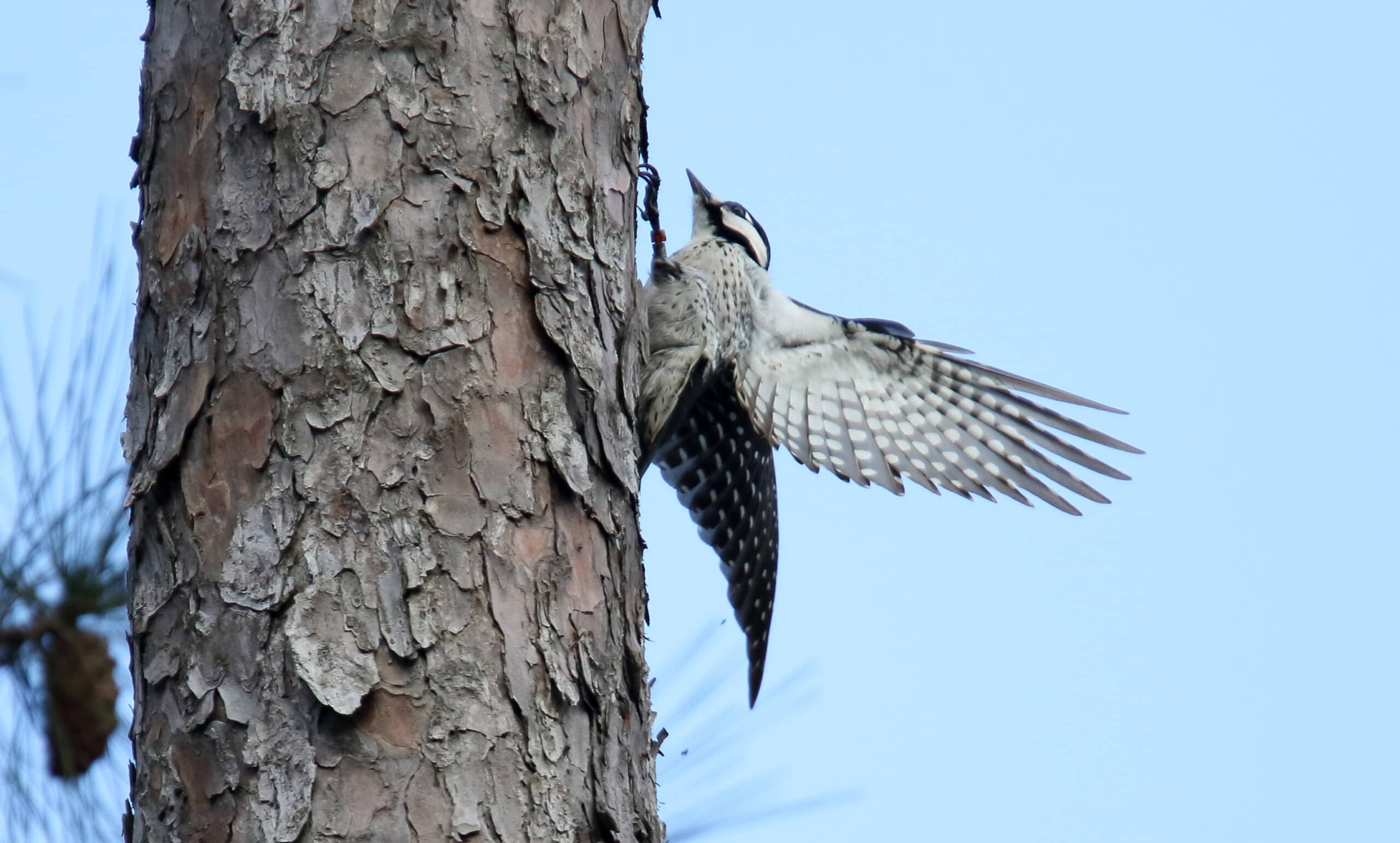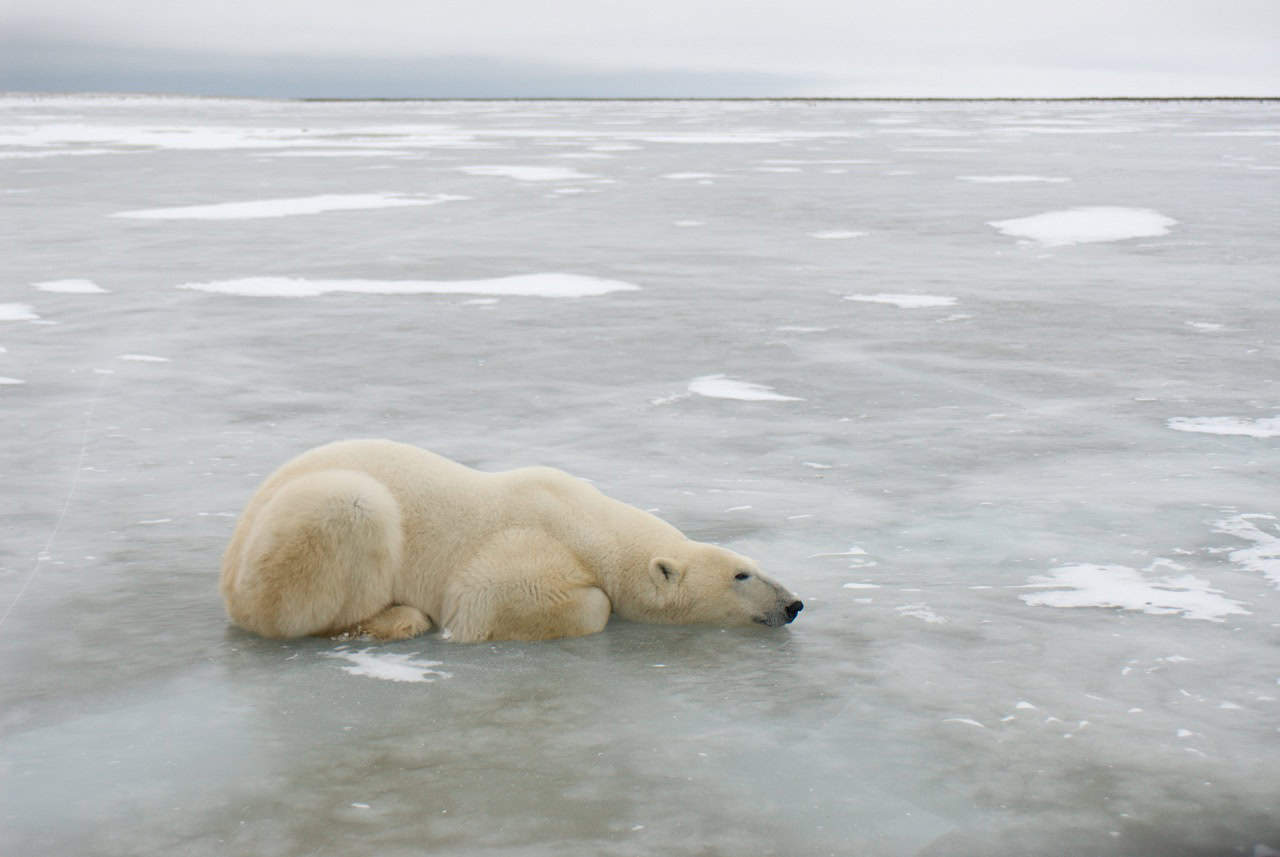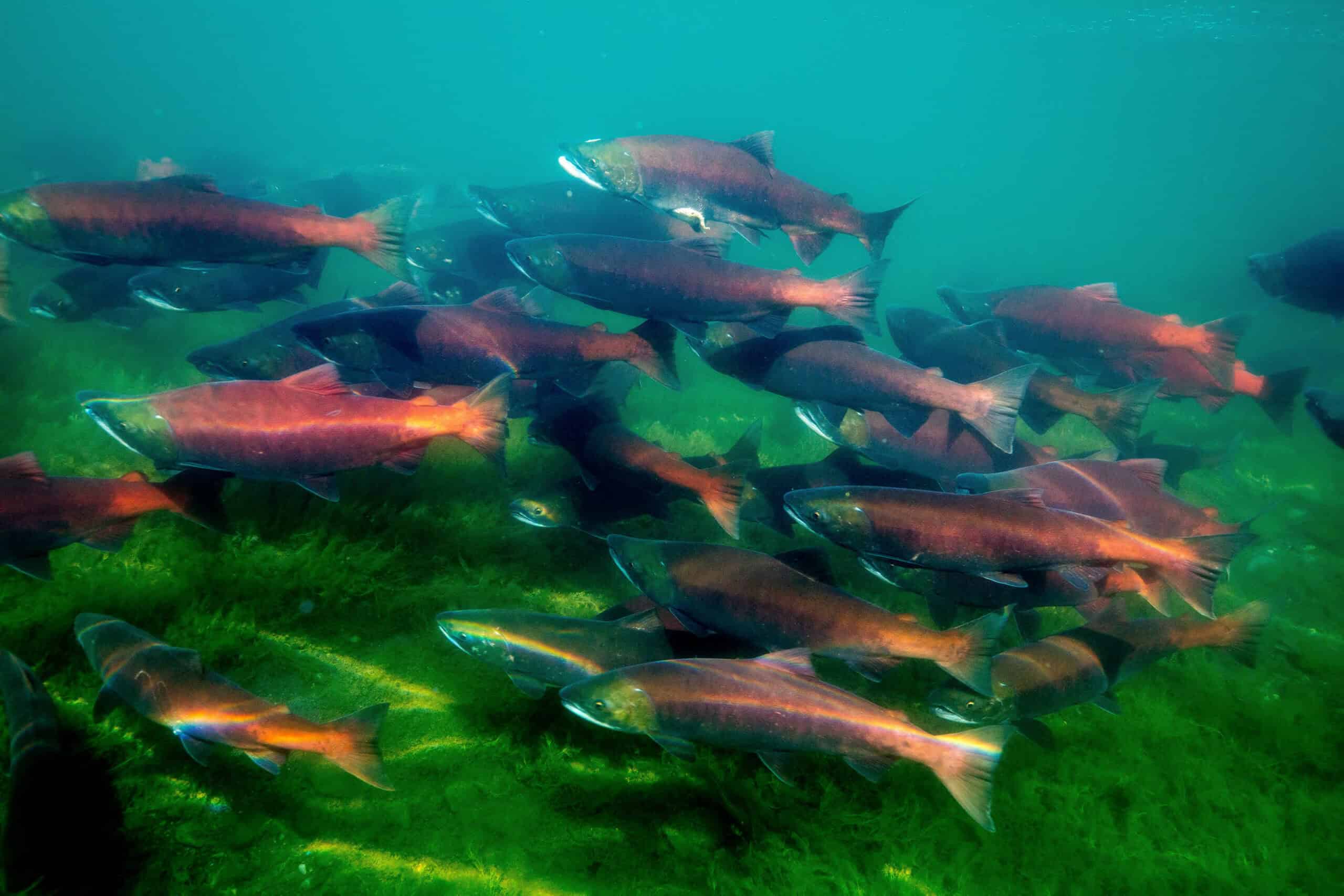Share this article
Wildlife Featured in this article
- Bowhead whale
Warming climate shifts bowhead whale migratory path
Bowhead whales are changing their timing and path of migration
Warming weather is contributing to bowhead whales moving the time and location of their migration in the Arctic.
Most baleen whales—cetaceans that use a filter-feeding system to eat—migrate to higher latitudes and have long migration routes and distinct feeding and breeding regions.
But bowhead whales (Balaena mysticetus) live exclusively in the Arctic and make more of a circular migration. Their wintering grounds are in the southern Bering Sea, then they migrate northward through the Bering Strait, a narrow connection leading to the Arctic Ocean. Once there, they take a hard right and follow the coast of Alaska to the Canadian part of the Beaufort Sea, where they typically feed in the summer. But on their return to their wintering grounds, they typically take a more roundabout way through the Chukchi Sea before crossing back through the Bering Strait.
“I knew that things were changing pretty rapidly in the Arctic,” said Angela Szesciorka, a research associate at Oregon State University and the lead author of a study looking at bowhead whale migrations published in Geophysical Research Letters. She wondered if sea ice loss was going to start changing the patterns of their migration paths and timing.
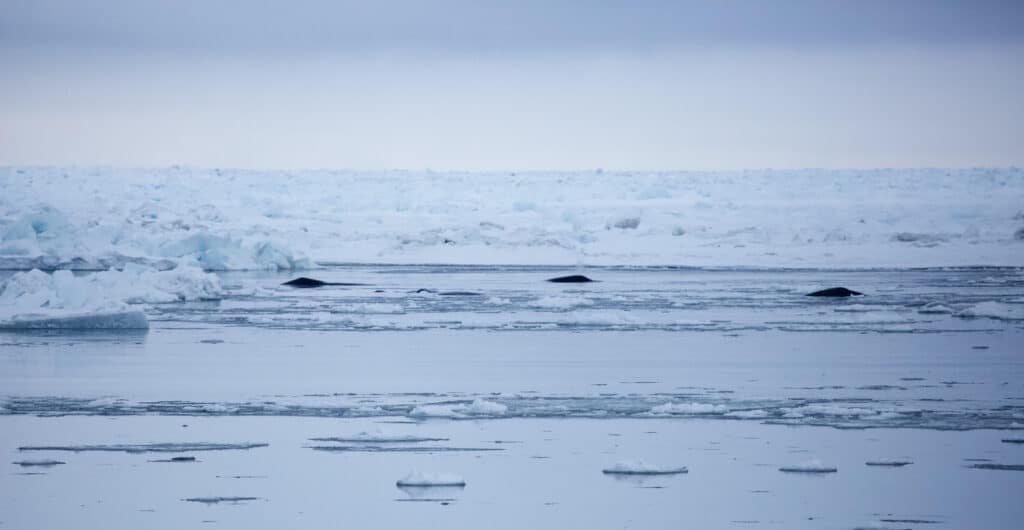
For Szesciorka’s PhD research, she had been studying blue whales (Balaenoptera musculus) in Southern California using passive acoustic data. She used their calling patterns to determine when they arrived in the region and when they left. She wondered if she could use this same technique to study the migration patterns of bowhead whales.
Luckily for Szesciorka, some of her colleagues had already been deploying hydrophones, or underwater recorders, for years in the western Beaufort Sea and Chukchi Sea. The researchers then examine the sound spectrograms, searching for the unique signatures of bowhead whale vocalizations. “It’s a wonderful system,” she said.
These particular recorders were left out for about a year or two at a time before they were replaced. They provided Szesciorka with data from 2008 to 2022 that could help her understand how sea ice loss may have changed the whales’ travel patterns. “It’s really fun as you’re going through it, but it’s tough too,” she said. Blue whales, for example, have simple patterns that are easy to identify—researchers can even use artificial intelligence programs. But bowheads have “complex songs” that are often overlapping with noise from other animals and the environment, making it difficult to use algorithms to identify them.
After the arduous task of analyzing the data, Szesciorka found that instead of all of the whales going into the Bering Sea, some are now spending their winters just north of the Bering Strait in the southern Chukchi Sea. They are also spending more time in the summer feeding in the Chukchi Sea.
Szesciorka said this is likely due to the food availability there. A warming climate may be changing nutrient pulses, and therefore, the distribution of krill and copepods that the bowhead whales feed on, she said. “Bowhead whales are opportunistic. They will feed whenever they can,” she said.
The recordings also suggested that the whales had shifted their winter departure from the western Beaufort Sea 45 days later in 2022 than they had in 2008. “With less sea ice out there, they stay longer for the season,” Szesciorka said.
These changing patterns can be challenging for Indigenous people who subsist on bowhead whales. There are 20 villages from three federally recognized Indigenous groups around the Bering Strait, she said.
Szesciorka is also concerned about the whales now coming into contact with more boats. She is currently looking at vessel trends in the Arctic, and has found that vessels are overlapping in the fall and winter with bowhead whale presence in the Chukchi Sea and Bering Strait. Boats can kill whales through strikes, and the noise the vessels make can hinder the marine ability to communicate.
Creating dynamic speed limit zones or banning traffic in areas where there are whales, could potentially mitigate these issues. Right now, Szesciorka said, there are no speed limits or other regulations. But multiple Tribes, states, provinces and countries would need to collaborate in many cases since the whales don’t abide by human-set boundaries. “How do you create rules and know everyone’s going to follow them?” she said.
The silver lining is that the whales have been able to adjust their migration in the face of climate change. But her fear is that “when things get more and more extreme, at some point you can’t keep adjusting.”
Header Image: A single bowhead whale surfacing in young ice in April 2015. Credit: Kate Stafford



